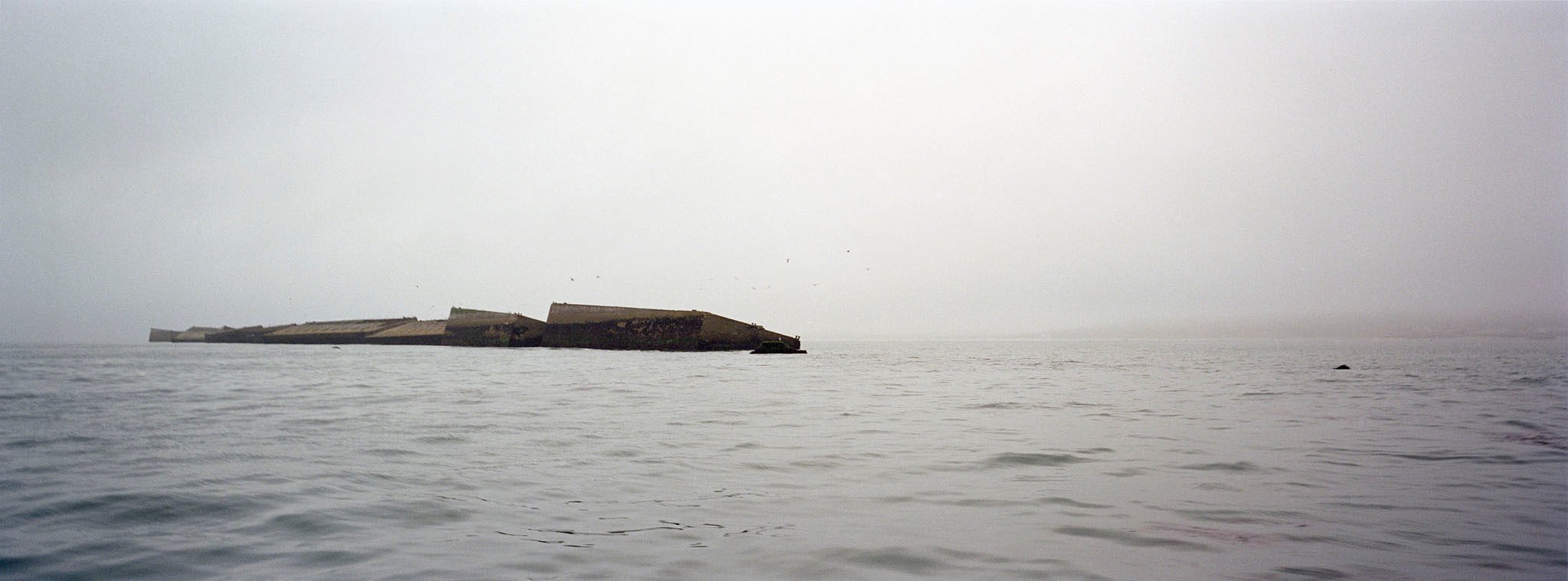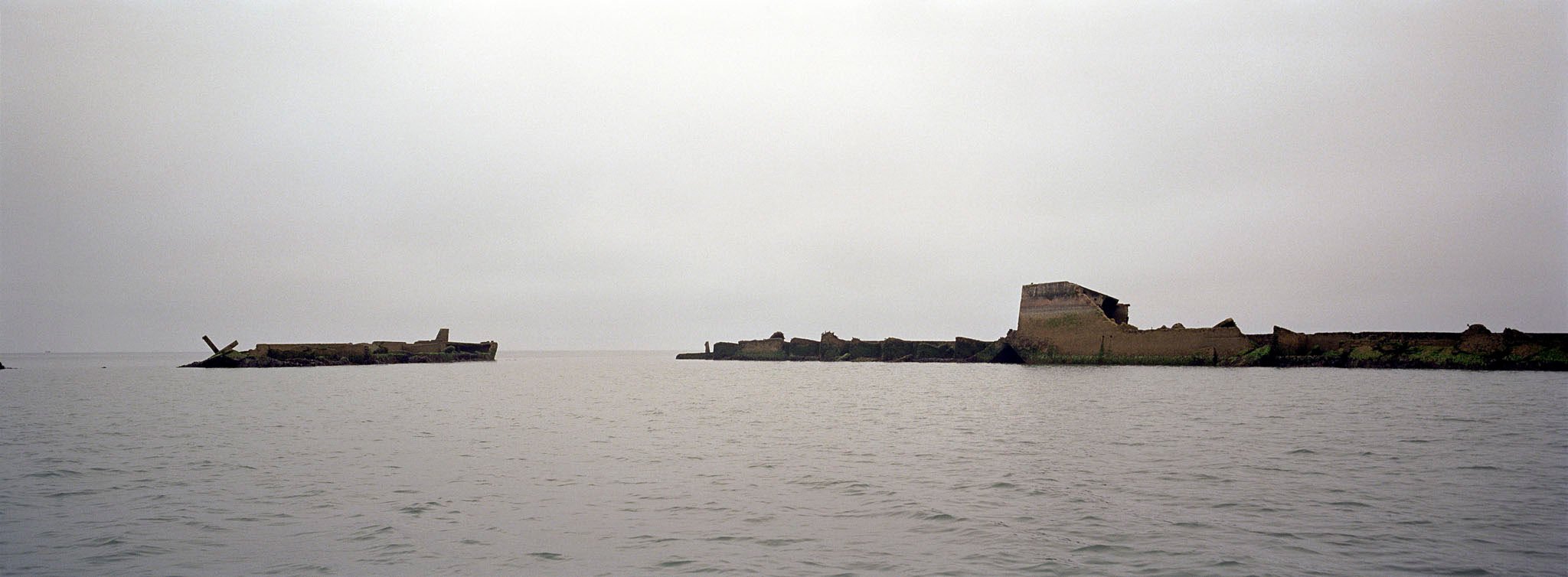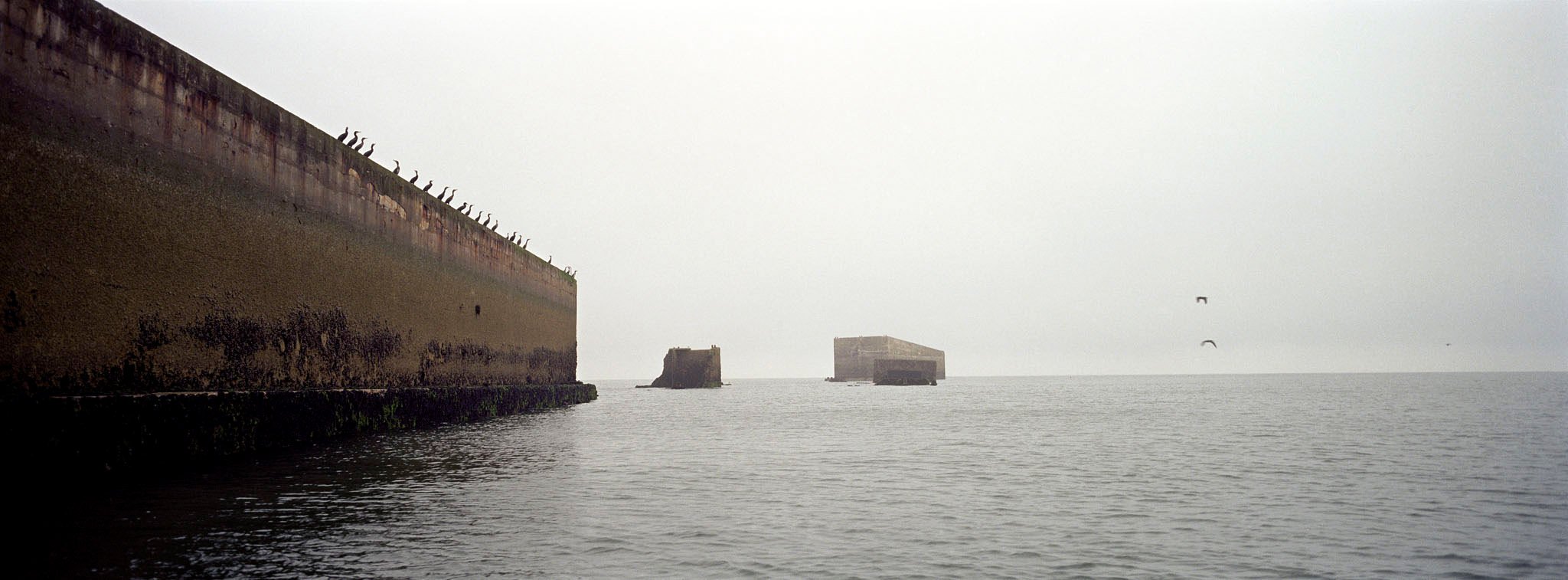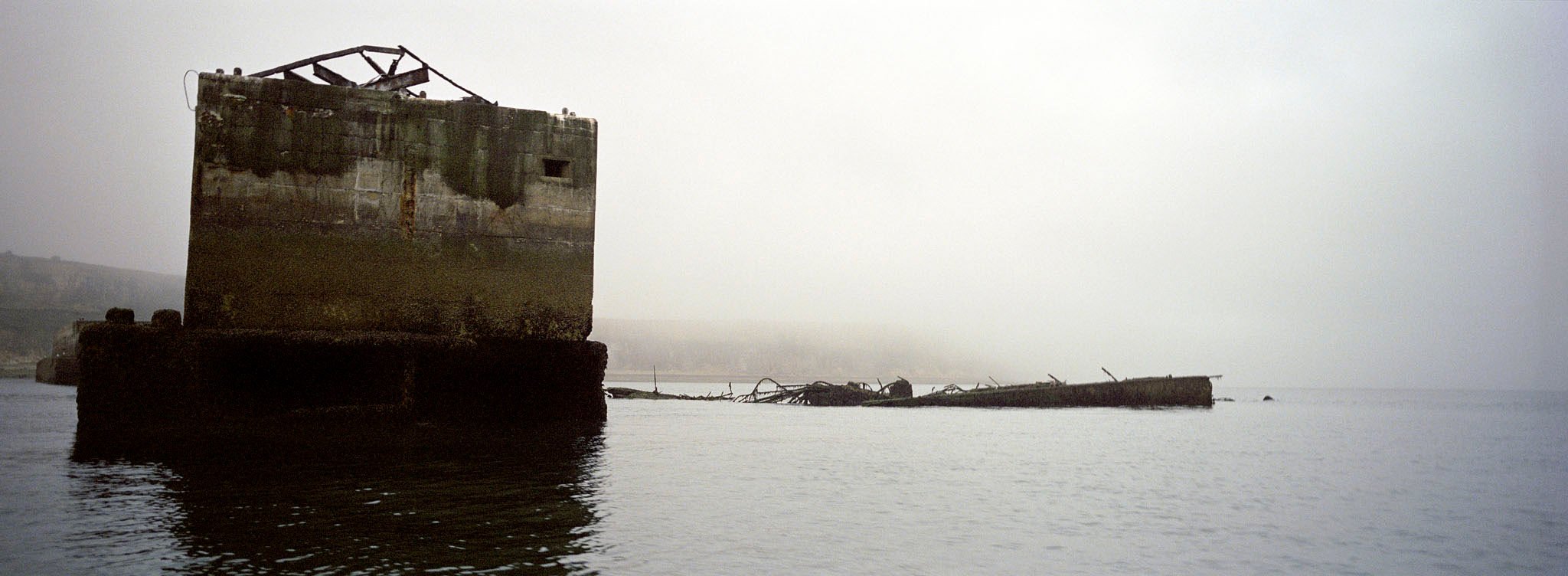
Mulberry Harbour
When an engineering feat like the Winston Harbor becomes a memory within the landscape of the French coast, it seems that beyond its utility, there is an unfinished conversation with our past, something that invites us to remember. If you take the time to contemplate the concrete structures, they seem to speak to each other in a language of their own that we cannot hear through the algae underneath. Like a cluster of blackberries floating in the sea, this artificial harbour observes the coast with the dignity of having served in favour of victory. Mulberry Harbour facilitated the flow of supplies to the Allied troops, where 2.5 million men, 500,000 vehicles, and 4 million tons of provisions were unloaded, necessary to sustain Operation Overlord and supply the Allied forces all the way to Berlin.
But what happens to this landscape altered by history today? The photographer answers this question through careful observation and a detailed study of light. The appearance of a shipwreck is fictional because the photographic distance gives these images a drifting dreamlike quality that the viewer must anchor to their memory to understand the echo of the last great war individually.













